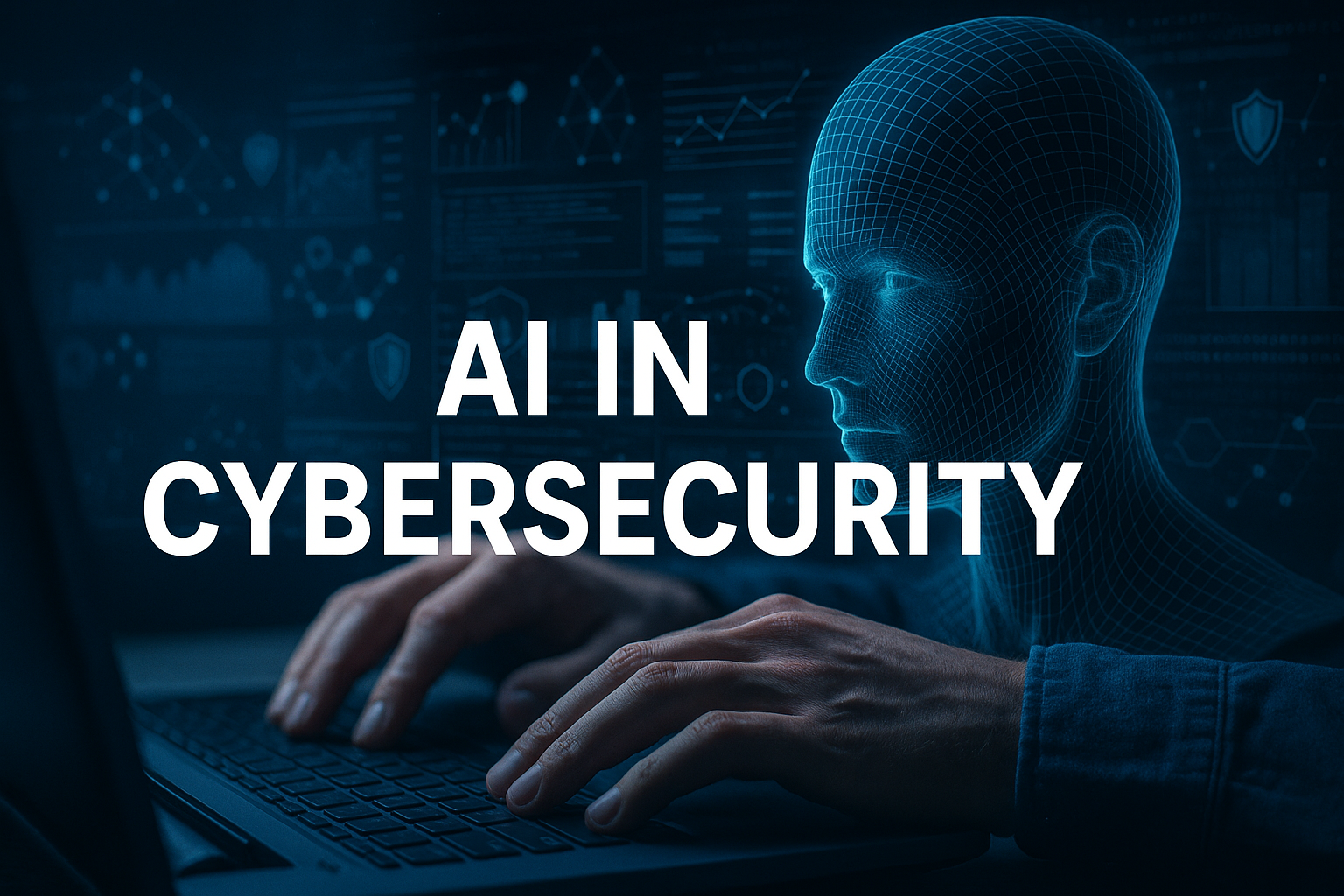
AI in Cybersecurity: Detecting Threats Before They Strike
Dive into the future of AI-driven cybersecurity. This comprehensive guide covers everything from threat detection to ethical AI practices in cyber defense.
2025-06-21
AI in Cybersecurity: Detecting Threats Before They Strike
Artificial Intelligence (AI) has emerged as a powerful ally in the war against cyber threats. With the rapid expansion of digital infrastructure, traditional defenses are no longer sufficient. This guide explores how AI can transform cyber defense from reactive to proactive.
📖 A Brief History of AI in Cybersecurity
AI in cybersecurity began in the 1990s, leveraging expert systems built on hand-crafted rules. These systems helped identify known patterns but quickly fell short as threats evolved. With the rise of machine learning, especially supervised algorithms and neural networks, security tools began detecting previously unseen behavior.
By the 2010s, deep learning models started processing huge log datasets, unlocking advanced insights into attack vectors and user behavior. From anomaly detection to predictive risk scoring, AI's role in modern cybersecurity has shifted from reactive protection to predictive analytics and intelligent automation.
🔍 What Threats Can AI Detect?
One of the biggest advantages of AI is its ability to detect threats that traditional signature-based systems miss. AI models can uncover zero-day vulnerabilities by learning what 'normal' traffic looks like and flagging outliers. Behavioral analytics can expose insider threats that deviate from known patterns.
Advanced Persistent Threats (APTs), which often hide undetected for months, can also be spotted by correlating behaviors across long timelines. Machine learning models trained on polymorphic malware can adapt to detect variants that would bypass classic detection methods. Even phishing and social engineering attempts are now intercepted by NLP-powered AI systems trained on millions of email datasets.
💡 Key Components of AI-Powered Security
Successful AI-based defenses rely on a robust data pipeline. This includes preprocessing raw logs, cleaning and formatting them for supervised or unsupervised learning. Real-time anomaly detection engines, often implemented with autoencoders or isolation forests, provide alerts for irregular events.
User and Entity Behavior Analytics (UEBA) systems apply clustering and profiling to baseline user actions. Natural Language Processing (NLP) techniques are integrated into log analyzers, allowing AI to understand textual threat reports. Finally, automated orchestration tools execute response actions based on AI decisions, reducing incident response times drastically.
from sklearn.ensemble import RandomForestClassifier
clf = RandomForestClassifier()
clf.fit(training_logs, labels)
predictions = clf.predict(new_logs)
print('Predicted Threats:', predictions)🛠️ Common Tools and Frameworks
Organizations use tools like Snort extended with ML plugins to perform lightweight intrusion detection. ELK (Elastic Stack) integrates machine learning jobs for log anomaly detection. IBM Watson Cybersecurity platform offers AI-driven threat intelligence by consuming large volumes of structured and unstructured data.
Darktrace and CrowdStrike deploy AI agents that analyze network activity and endpoint behavior in real-time. OpenAI's GPT models are increasingly used in phishing simulation and red teaming exercises, training organizations to detect realistic AI-generated social engineering threats.
📊 Real-World Use Cases
In the finance sector, AI helps detect fraudulent transactions by learning account behavior over time. Any deviation—such as a sudden large transfer to an offshore account—can trigger automated alerts. In healthcare, patient record systems use anomaly detection to identify unauthorized access attempts.
Cloud providers use AI to analyze billions of authentication logs daily. Suspicious login attempts, like unusual geolocations or behavior spikes, are flagged automatically. Government agencies leverage predictive defense models that preempt nation-state actors through dynamic threat intelligence correlation.
🤝 Human-AI Collaboration
Rather than replacing human analysts, AI amplifies their capabilities. Analysts can offload repetitive tasks like triaging alerts, while focusing on deep investigations and threat hunting. AI accelerates analysis, but human intuition and domain knowledge remain irreplaceable, especially in nuanced incidents involving multiple data sources.
⚠️ Limitations and Risks of AI in Cybersecurity
AI systems can only perform as well as the data they are trained on. Biased or incomplete training data can create dangerous blind spots. Attackers have also developed adversarial techniques to fool machine learning models, such as injecting crafted inputs that are misclassified as benign.
Over-reliance on automated decision-making without human oversight can also result in false positives and inappropriate responses. Therefore, explainability, continuous evaluation, and hybrid decision architectures are essential for trustworthy AI.
🔐 Ethical & Regulatory Considerations
AI use in cybersecurity must comply with data protection regulations like GDPR, especially when monitoring employee behavior. Transparency into model logic is increasingly required by legislation. Explainable AI (XAI) frameworks offer visibility into decision-making processes, making systems auditable and trustworthy.
Training models using anonymized and properly permissioned data sets is crucial. Balancing effective defense with privacy and civil liberties will be the defining challenge of the next decade.
✅ Best Practices for Secure AI Adoption
To successfully implement AI, organizations should use large, diverse, and representative datasets. Periodic re-training, adversarial testing, and red teaming exercises help expose weaknesses. Documentation of AI decision paths supports accountability.
Moreover, integrating AI into SOAR (Security Orchestration, Automation, and Response) platforms ensures timely, contextual actions are taken across the enterprise stack. Cybersecurity professionals must be trained to interpret and validate AI outputs—not just trust them blindly.
🚀 The Future of AI in Cyber Defense
The future lies in continuously learning AI that not only detects but also neutralizes threats autonomously. Federated learning models will allow cross-organizational collaboration without exposing raw data. SOCs will become faster, leaner, and more resilient—fueled by the symbiotic relationship between machines and humans.



